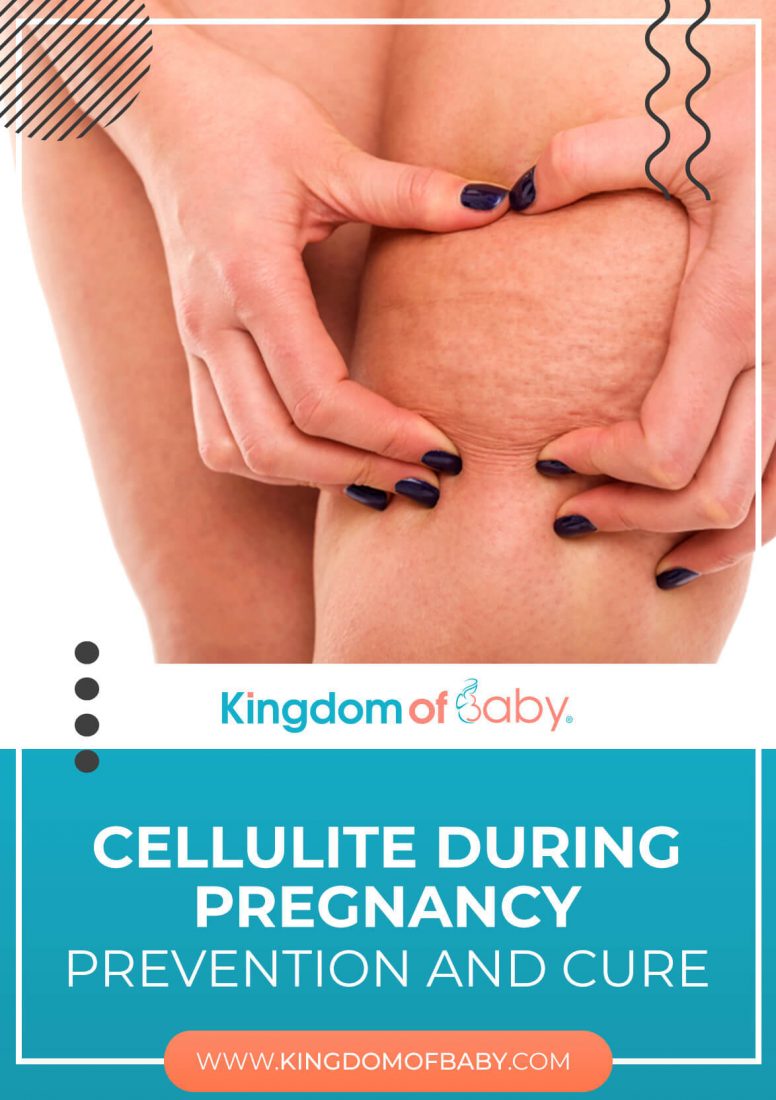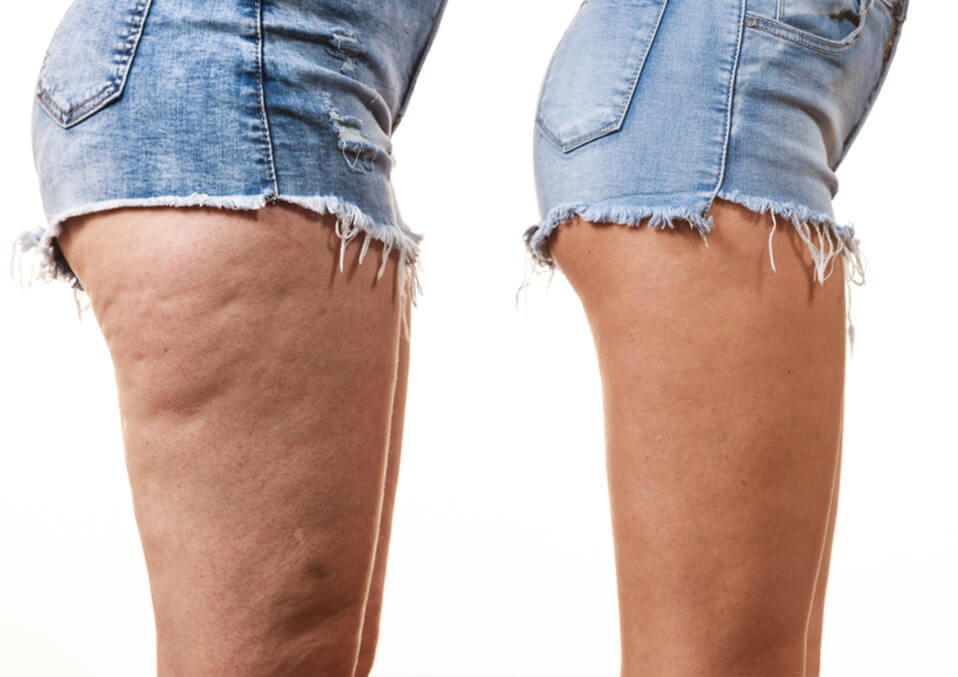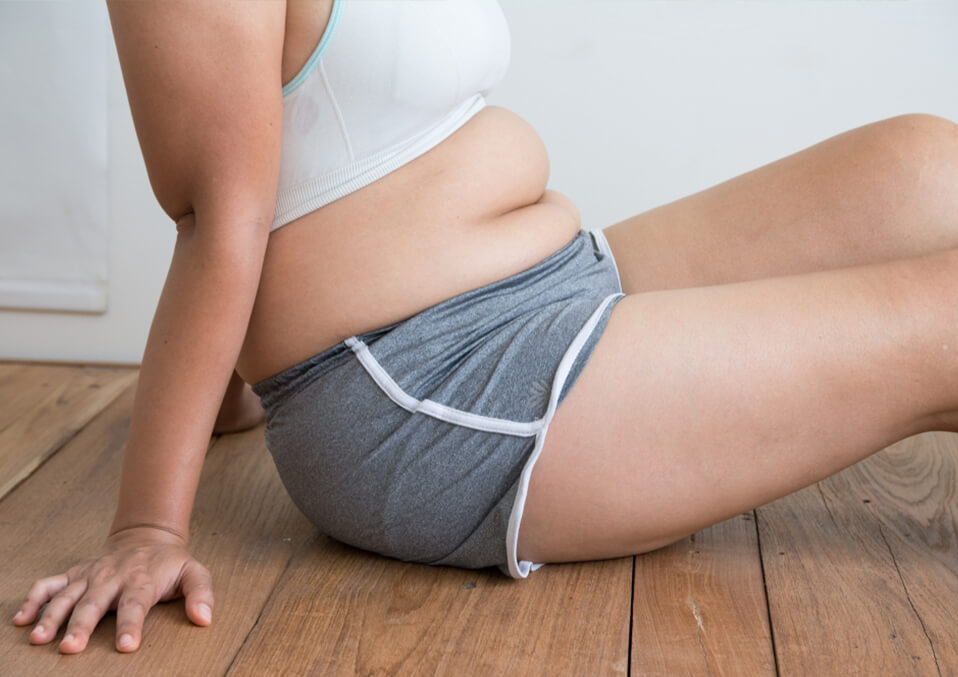
As one gets pregnant, many changes are happening in the body. Unfortunately, not all of these changes are welcome to all women. Nausea, mood swing and morning sickness makes women feel weak and tired. As the months progress, more often than not, many women tend to gain weight. Bulges seem to appear in different parts of the body. Some women feel a little low and anxious because of this issue. But worry no more because you can do something about it.
What is cellulite?

Many women may have heard of cellulite although some are familiar with it and some are not. But one thing is for sure, no one wants to have it. Cellulite builds up when a fat deposit pushes through the connective tissue under the skin. In Lay man’s term, it is the formation of lumps and dimples on the skin. It is also known in different names depending on its severity – orange peel skin if it is mild, cottage-cheese skin if it is moderate and mattress phenomenon if it is already severe.
Although more common in women, this occurs on both sexes. Almost 80% to 90% of women experience cellulite once in their lifetime. While men usually have it in the abdominal area, women, especially those who are pregnant may have it in the butt, thighs, tummy, hips and upper arms.
What causes it?

Several factors affect the formation of cellulite among expecting mothers.
One of the primary causes of cellulite is weight gain. Healthy weight gain is expected among expecting mothers, especially when her baby in the womb is growing up. But if it is beyond normal, it is considered unhealthy. During pregnancy, the body usually packs on pounds to assist the growth of the baby. The baby needs this extra fat but unfortunately, this means extra cellulite on your body. These extra fats push through which loosen collagen fibers that worsen the issue.
Some hormones contribute to the production of cellulite. Estrogen helps in the rise of blood flow in the uterus and the growth of breast tissue. On the contrary, it reduces blood flow to connective tissue causing cellulite to occur. Another hormone, relaxin, helps to relax ligament in the pelvis and tissues in the cervix is important in the preparation of childbirth. In contrast, it lessens collagen production, thus, more fats in the body causing connective tissues to loosen causing cellulite.
Read also: The unveiling truth about heartburn in pregnancy and baby hair
An expectant mom’s lifestyle also adds up to the production of cellulite in her body. During pregnancy, most women have a lower energy level. In the first trimester, body changes and mood swings can cause women to experience fatigue and so, they don’t feel like doing anything. Once the belly becomes bigger, she might even anxious or tired of doing some exercises. This can also lead to cellulite.
While pregnant, a woman’s body tends to store excessive volume of body fluids. This causes water retention in different areas of the body. This also leads to the formation of cellulite.
Our genes can also affect cellulite build up in the body. A person’s speed of metabolism, level of circulation and the distribution of fats under her skin. Usually, if your mother has cellulite, there is a huge possibility that you can have it too. Also, women who get pregnant later in life tend to develop cellulite more than those who became pregnant younger.
How to prevent it

Worry not, for there are several, natural ways to get rid of cellulite during pregnancy. These are safer and effective. These will not pose a risk to the mother and her fetus as well.
Read also: All you need to know about ear popping during pregnancy
First is to maintain a well-balanced diet. Consult a dietitian to know what food is good for you. A pregnant woman has a special diet or meal plan to nurture her and the baby in her womb which may be different from what she eats when she is not yet pregnant. Food cravings may occur during these times but do not overeat. As much as possible, avoid fast food meals, fatty meats, and high-calorie sweets. Switch to more fresh fruits and vegetables and fish. Shun from artificial flavorings and dyes on food.
It may sound tedious, but exercise is important in the time of pregnancy. It is a false belief that pregnant moms should stop doing things. Inactivity causes more harm than good. What is prohibited is strenuous activities and exercises that may lead to high-risk complications. You can consult your OB-gynecologist and fitness experts for sets of exercises that may apply to you. Simple cardiovascular exercises like walking and low impact aerobics can be beneficial, too. Moreover, those who exercise during pregnancy can get back to shape easier after giving birth. Being active can help prepare the body for child delivery. To begin with, it is better to manage one’s weight if you are planning to get pregnant.
Read also: Phantom pregnancy false pregnancy or pseudocyesis guide
Keep the body hydrated. Drinking a lot of water flush out toxins in the body that lessens the possibility of having cellulite. Eat lots of vegetables, berries and seafood to decrease water retention. Opt for green tea if you want to keep your weight in control. Avoid coffee while pregnant.
Add food rich in omega-3 fatty acids in your diet. It helps the body to bind cellulite. Taking an additional amount of vitamin C and E makes the skin healthy that helps to manage cellulite. Although carbohydrate is needed by the body, do not overeat. Reduce salt intake since it may dehydrate the body.
A light pregnancy massage will not just make you feel relaxed, it will help in blood and lymph circulation. A good circulation reduces the formation of cellulite. Also, it promotes better sleep and relieves stress.
Read also: Perks of girls getting knocked up abroad
Avoid wearing tight underwear and clothes that limit blood flow during pregnancy, it also contributes to cellulite formation, especially in the buttocks area.
What can I do about it?
Although not a medical concern but its appearance. If you feel conscious and you want to remove or lessen those orange-peel look on your skin, you can do some of the following regimens:
Buy and use specialized skin brushes specifically made to distribute the cellulite in the skin so it will not accumulate in one particular area.
You can make a paste made from ground coffee, coconut oil, and sugar. Rub it to affected areas and fat deposits will lessen. Choose a skin moisturizer that does not contain any harmful substance to keep the elasticity of the skin and maintain collagen.
Cellulite treatment to avoid during pregnancy
To date, there are several medical treatments for cellulite that is proven fast and effective with longer effect. But please take note that these treatments do not apply to pregnant mothers. It is better to use these treatments after one has given birth.
Medicines taken orally may contain potent stimulant properties that burn cellulite, but this can harm the baby. Laser or thermal treatment may be safe for others in treating cellulite. It uses a method that increases the body temperature of a target area for treatment. It poses danger to the fetus since it needed a balanced temperature to live.
Read also: Having an upset stomach during pregnancy is it something to worry about
Meanwhile, topical creams, although it is easy to use absorb water from fat cells to remove lumpy appearance caused by cellulite. But avoid it during pregnancy. When absorbed by the skin, it can pass to the placenta through the blood and harm the fetus that may cause some birth defects.
With proper diet and exercise, anyone can get rid of cellulite. This is also applicable to pregnant mothers. As soon as you give birth, consult your doctor, and if your body is already capable, you can also start shedding weight through diet and exercise that will eliminate that accumulated cellulite.
Read also:
- Bikini Wax During Pregnancy: is it Safe?
- Dragon Fruit in Pregnancy: is it Safe to Consume?
- Pregnancy and Chemical Peeling: Everything You Need to Know


